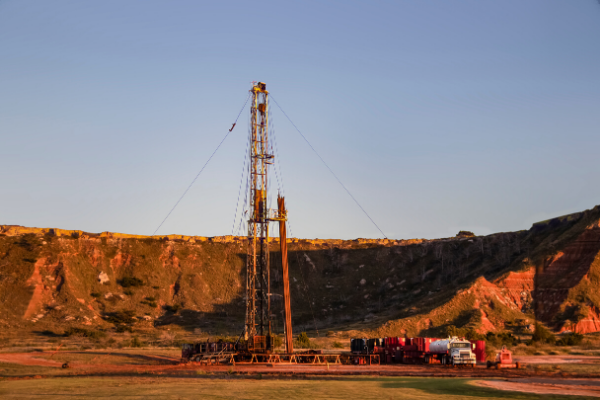OKLAHOMA CITY – An “energy survey” released by the Federal Reserve Bank of Kansas City showed how energy activity in the Tenth District, which includes Oklahoma, declined at a steep pace and expectations for future activity dropped further.
“District energy activity fell sharply during the first quarter of 2020, with our index dropping to its lowest level since we began the survey in early 2014,” said Chad Wilkerson, Oklahoma City Branch executive and economist at the Federal Reserve Bank of Kansas City.
He said many of the survey findings reached record lows.
“Expectations for future activity also fell to their lowest level since late 2014, as most firms do not expect energy prices to return to profitable levels this year.”
The Kansas City Fed’s quarterly Energy Survey provides information about current and expected activity among energy firms in the Tenth District.
The Tenth Federal Reserve District encompasses all of Kansas, Colorado, Nebraska, Oklahoma, and Wyoming, plus the western third of Missouri and the northern half of New Mexico.
The survey monitors oil and gas-related firms located and/or headquartered in the Tenth District, with results based on total firm activity. Survey results reveal changes in several indicators of energy activity, including drilling, capital spending, and employment.
Firms also indicate projections for oil and gas prices.
The first-quarter survey took place between March 16 and March 31 and was released April 7.
INDEXES FOR DRILLING, PROFITS, REVENUES, WAGES ‘TURN NEGATIVE’
The drilling and business activity index fell from -48 to -81, the lowest reading in survey history (since early 2014), indicating a continued, deep decrease in activity, Wilkerson said.
The revenues and profits indexes fell sharply to levels last seen in Q1 2015. Indexes for employment and employee hours also decreased significantly, and the wages and benefits index turned negative. Additionally, the indexes for supplier delivery time and access to credit declined further.
Year-over-year indexes also declined substantially. The year-over-year drilling and business activity index sank further, from -50 to -92, a record survey low. Indexes for total revenues, capital expenditures, delivery time, profits, employment, employee hours, and access to credit decreased again in the first quarter, marking over six months in negative territory.
The year-over-year index for wages and benefits also turned negative.
Expectations indexes dropped further. The future drilling and business activity index worsened from -21 to -78, the weakest outlook for activity since Q4 2014. The future capital expenditures, delivery time, profits, employment, employee hours, wages and benefits, and access to credit indexes decreased again in Q1 2020.
The future revenues and profits indexes dropped steeply to the most negative readings in survey history. Price expectations for oil and natural gas liquids decreased compared to the previous quarter, while price expectations for natural gas rose.
OIL PRICES STILL LOW
Firms were asked what oil and natural gas prices were needed for drilling to be profitable on average across the fields in which they are active (in alternate quarters they are asked what price they need for a substantial increase in drilling). The average oil price needed was $47 per barrel, with a range of $25 to $65. This average was below the prices reported in 2019 and the lowest recorded profitable price.
(Editor’s note: oil prices April 8 were: West Texas Intermediate, $25.92/barrel; Brent crude, $33.34/ barrel; Oklahoma sweet, $21.52/barrel; and Oklahoma sour, $9.22/barrel.)
The average natural gas price needed was $2.74 per million Btu, with responses ranging from $1.90 to $4.50.
Firms also were asked about their expectations of firm solvency if low oil prices persist. Contacts anticipated on average that 61% of firms would remain solvent in the next year if the WTI price of oil were to stay at $30 per barrel, and 64% of firms would remain solvent if the WTI price of oil were to stay at $40.
Respondents expected considerably fewer firms to remain solvent if oil prices stay low for more than one year. Finally, respondents were asked if they have seen additional pressure from investors or customers regarding environmental practices. Of the firms contacted, 58% indicated they have seen increased pressure regarding environmental practices over the last 24 months. More than 48% of firms reported gas flaring as a top environmental concern from investors and customers, and 45% listed water management and carbon emissions (other than gas flaring) as a top environmental concern.
SELECTED ENERGY COMMENTS
“The combination of the supply shock (Saudi and Russia supply increase) and demand shock (COVID-19) are introducing challenges we have never seen before. We are hunkering down to live within cash flow.”
“Long term $30 per barrel (oil price) will lead to massive consolidation and insolvency.”
“The oilfield is generally highly leveraged and these commodity prices will not sustain the bulk of firms in the industry.”


